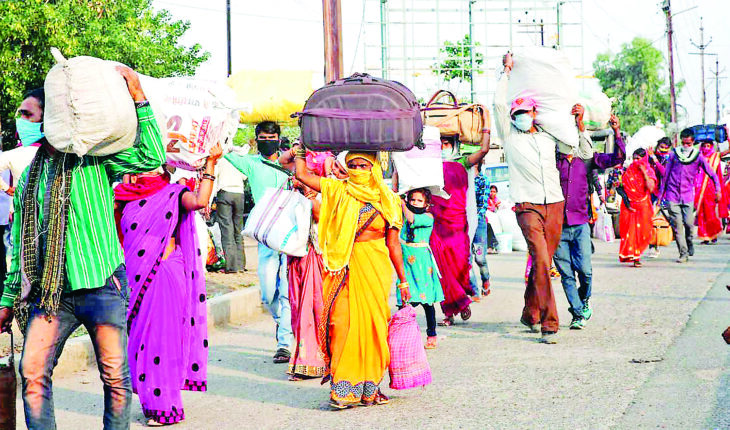NEW DELHI: India’s middle class may have shrunk by a third due to 2020’s pandemic-driven recession, while the number of poor people — earning less than ₹150 per day — more than doubled, according to an analysis by the Pew Research Center.
In a comparison, Chinese incomes remained relatively unshaken, with just a 2% drop in the middle class population, it found.
The report, released on Thursday, uses World Bank projections of economic growth to estimate the impact of COVID-19 on Indian incomes.
The lockdown triggered by the pandemic resulted in shut businesses, lost jobs and falling incomes, plunging the Indian economy into a deep recession.China managed to avoid a contraction, although growth slowed, the report said.
“The middle class in India is estimated to have shrunk by 3.2 crore in 2020 as a consequence of the downturn, compared with the number it may have reached absent the pandemic,” said the report, defining the middle class as people with incomes of approximately ₹700-1,500 or $10-20 per day.
“Meanwhile, the number of people who are poor in India (with incomes of $2 or less a day) is estimated to have increased by 7.5 crore because of the COVID-19 recession. This accounts for nearly 60% of the global increase in poverty,” the report added, estimating an increase from almost 6 crore to 13.4 crore poor people. It also noted the record spike in MGNREGA participants as proof that the poor were struggling to find work.
The vast majority of India’s population fall into the low income tier, earning about ₹150 to 700 per day.
Pew’s projections suggest this group shrank from 119.7 crore to 116.2 crore per day, with about 3.5 crore dropping below the poverty line.
The middle income group is likely to have decreased from almost 10 crore to just 6.6 crore, while the richer population who earn more than ₹1,500 a day also fell almost 30% to 1.8 crore people.
In contrast, China’s middle class is likely to see a miniscule dip of just one crore, while the number of poor people may have gone up by 10 lakh, according to the report.
Pew warned that the situation may actually be worse than estimated. “The methodology in this analysis assumes that incomes change at the same rate for all people,” it explained. AGENCIES
In a comparison, Chinese incomes remained relatively unshaken, with just a 2% drop in the middle class population, it found.
The report, released on Thursday, uses World Bank projections of economic growth to estimate the impact of COVID-19 on Indian incomes.
The lockdown triggered by the pandemic resulted in shut businesses, lost jobs and falling incomes, plunging the Indian economy into a deep recession.China managed to avoid a contraction, although growth slowed, the report said.
“The middle class in India is estimated to have shrunk by 3.2 crore in 2020 as a consequence of the downturn, compared with the number it may have reached absent the pandemic,” said the report, defining the middle class as people with incomes of approximately ₹700-1,500 or $10-20 per day.
“Meanwhile, the number of people who are poor in India (with incomes of $2 or less a day) is estimated to have increased by 7.5 crore because of the COVID-19 recession. This accounts for nearly 60% of the global increase in poverty,” the report added, estimating an increase from almost 6 crore to 13.4 crore poor people. It also noted the record spike in MGNREGA participants as proof that the poor were struggling to find work.
The vast majority of India’s population fall into the low income tier, earning about ₹150 to 700 per day.
Pew’s projections suggest this group shrank from 119.7 crore to 116.2 crore per day, with about 3.5 crore dropping below the poverty line.
The middle income group is likely to have decreased from almost 10 crore to just 6.6 crore, while the richer population who earn more than ₹1,500 a day also fell almost 30% to 1.8 crore people.
In contrast, China’s middle class is likely to see a miniscule dip of just one crore, while the number of poor people may have gone up by 10 lakh, according to the report.
Pew warned that the situation may actually be worse than estimated. “The methodology in this analysis assumes that incomes change at the same rate for all people,” it explained. AGENCIES





